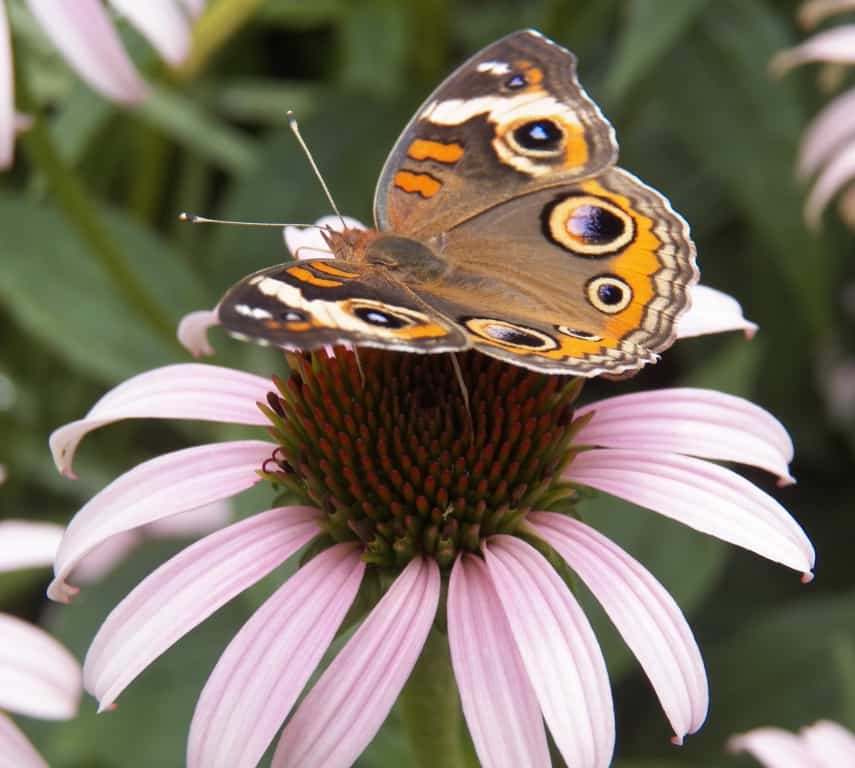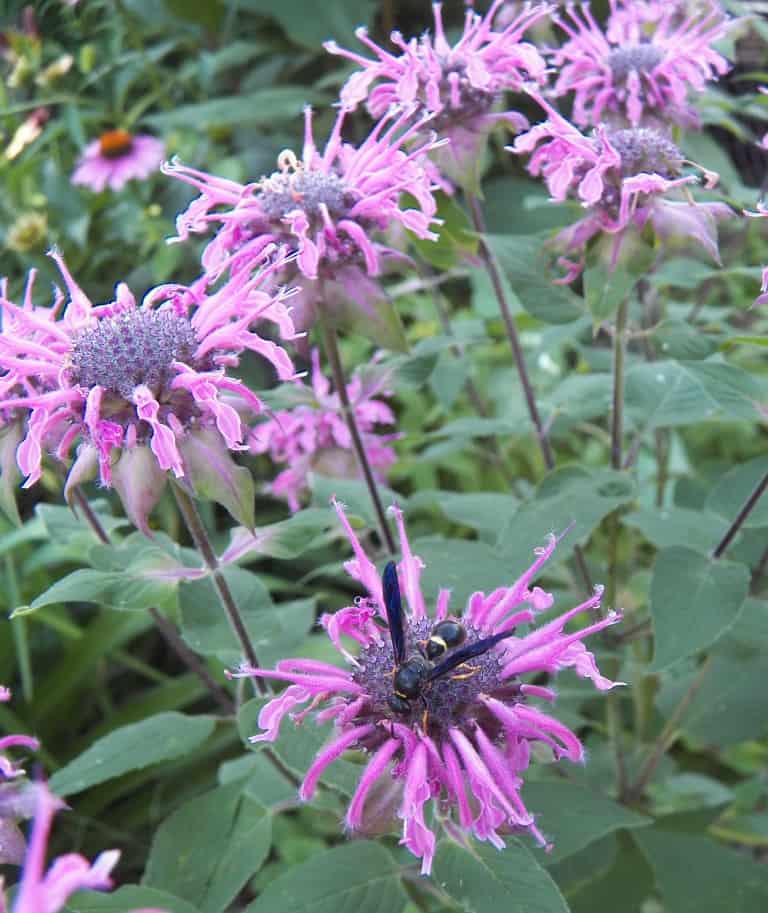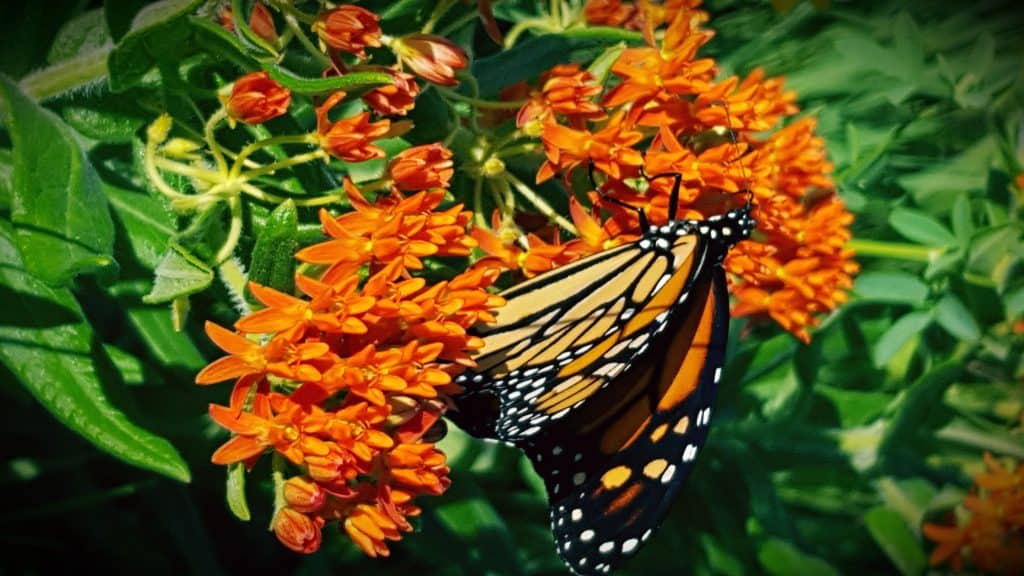Seems everywhere I go these days I hear about pollinator gardens, bee-friendly plants, and bee gardens. Everyone is finally getting into planting for bees and butterflies and not just to make their home look nice. Although it is easy to do both, have a nice looking landscape and have pollinator friendly gardens. So what pants are best for pollinators? This discussion can lead to many different species of plants with different bloom periods. I will try to discuss these in groups of bloom times. For now, June through July blooming plants can really tie together the rush of spring with the subtlety of fall. During the hottest part of the season we have some of the hottest bloomers of the season.
The following are the first 5 of my Top 10 performers for this summer’s heat waves. The final 5 will come with next week’s post. Once established, these perennials will their hearts out for you during the heat and even longer for some. They will have the most visits from pollinators and many are host plants for butterflies and moths. Enjoy the show!
- Butterfly Milkweed (Asclepias tuberosa) Cultivars: ‘Hello Yellow’ Butterfly milkweed has become one of the most widely planted perennials for Monarch butterflies. This low growing milkweed likes well-drained soils in full sun to part shade. It is drought tolerant but can sometimes be found growing in areas that are briefly flooded such as waterways. The bright orange color makes it very attractive to both pollinators and landscapes. It makes a great landscape plant at 2 feet tall by 2-3 feet wide. Seedlings will often come up around it. It blooms from May to July, sometimes longer.


2. Purple Coneflower (Echinacea purpurea) Cultivars: ‘Sombrero Salsa Red’ ‘Wild Berry’ ‘Magnus’ ‘Cheyenne Sky’ Purple coneflower is another favorite among gardeners across the temperate world. Used in landscapes, meadows, and prairie gardens, this perennials is a great addition to any pollinator place. Purple coneflower likes well drained soils in full sun to part shade. It grows 2 to 3 feet tall and most plants are 1 foot wide. They do great in mass plantings and in clumps of 3 to 6 plants in a landscape. Butterflies and bees and others are attracted to the composite flowers of disc and ray flowers. It reseeds well so put it somewhere it can grow. Bloom time is from June to September.


3. Ornamental Onion (Allium species) Cultivars: ‘Millenium’ ‘Mongolian Gem’ ‘Millenium’ ornamental onion is a powerhouse of blooms for pollinators in July. This onion boasts superb blooms that are festooned with pollinators of all sorts. There is nothing quite like this allium when seen in full bloom, in mass or individual plantings. It can be divided in spring or fall and plants will regrow to original size in 18 months. ‘Millenium’ grows 18 inches tall buy 12 inches wide and grows in clay, compacted soil, and well-drained soils. Extremely drought tolerant, they do best in full sun. Blooms last about 6 weeks from July to August.

4. Bee Balm (Monarda species) Cultivars: ‘Grand Marshall’ ‘Coral Reef’ ‘Fire Marshall’ ‘Bee You Bee Free’ ‘Dwarf Fireball’ Beebalm is great plant for bumblebees and hummingbirds. This upright perennials blazes into life in the heat of summer with fiery red, pink, mauve, or purple blooms atop minty to lemony smelling stalks. Bee balm prefers moist to well-drained soils in full sun or part shade. While there is no cultivar completely resistant to powdery mildew, I rank this perennial high for its ability to produce pollinator friendly blooms despite disease issues. Cultivars range in size from 2 to 8 feet tall and spread outward via rhizomes in the soil. Blooms from June to September.


5. Black Eyed Susan (Rudbeckia hirta) Cultivars: ‘Goldsturm’ ‘Little Viettes’ Black-eyed Susans are a longtime favorite of gardeners with their brilliant yellow to orange blossoms amid dark green leaves. This perennial favorite is well visited by pollinators of all sorts and many predators sit on the flowers waiting for a tasty snack. There are even caterpillars that disguise themselves to mimic the petals of the flowers. The native Rudbeckia hirta can be seen growing along roadsides and in ditches, fields, and prairies. It prefers full sun to part shade, I have even found it growing and blooming in full shade in the woods. It likes well drained to heavy clay soils and is very adaptable. Cultivars like ‘Goldsturm’ are great for landscape plantings, though it does not bloom as long or as early as the native species. Heights can vary from 2 to 4 feet tall and it may grow 2 to 3 feet wide per plant. Blooms from June to August.


Happy planting!



